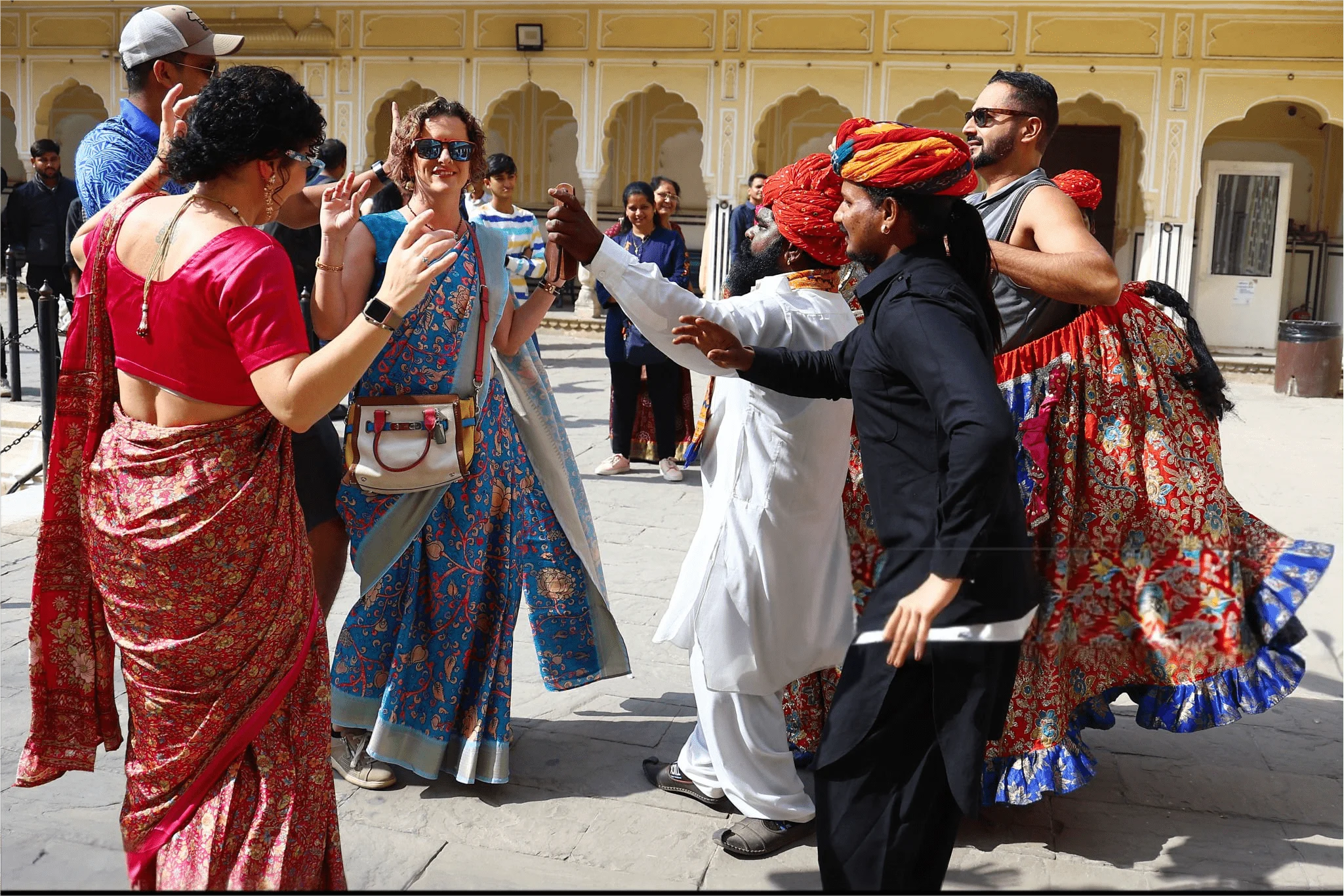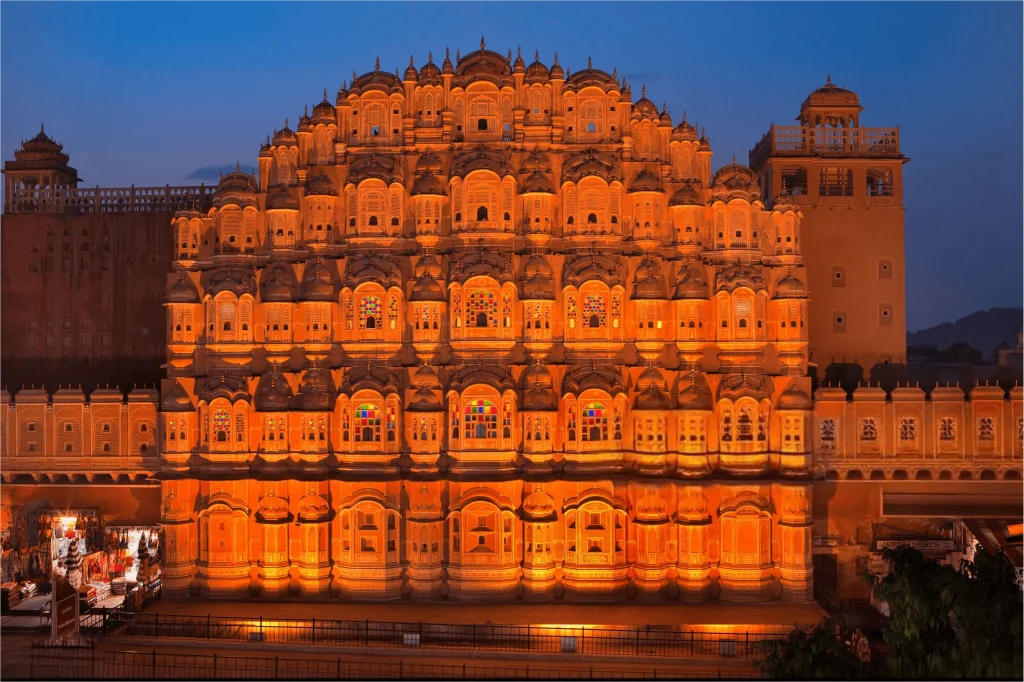India’s Golden Triangle — Delhi, Agra, and Jaipur — along with the majestic state of Rajasthan, forms a travel circuit that captivates foreign tourists with its grandeur, history, and vibrant culture. Whether it’s the magnificent Taj Mahal, the pink-hued facades of Jaipur, the deserts of Jaisalmer, or the regal charm of Udaipur, these destinations offer unforgettable memories. However, choosing the right time to visit is crucial to fully experience their magic.
India has a diverse climate, and northern India, where the Golden Triangle and much of Rajasthan are located, undergoes significant seasonal changes. The region’s hot summers, humid monsoons, and pleasant winters mean your experience can differ greatly depending on when you travel. For international visitors unfamiliar with India’s tropical weather patterns, knowing when to go ensures a smoother, more enjoyable journey.
Why Timing Matters When Visiting Northern India
Northern India is a land of extremes. Summer temperatures in Rajasthan can soar above 45°C, while winter mornings can be cool and misty. The monsoon season, though beautiful, can disrupt travel plans with heavy rains and slippery roads. Each season brings different sights, sounds, and moods, which directly affect sightseeing, comfort, and even hotel availability.
Foreign tourists often prefer cooler, drier months for easier travel and outdoor exploration. This not only allows for visiting monuments and forts with comfort but also gives a chance to witness India’s cultural festivals, many of which take place between October and March.
October to March: The Ideal Time to Visit

The most recommended time for foreign travelers to explore the Golden Triangle and Rajasthan is between October and March. During these months, the weather is pleasantly cool, ranging between 10°C and 28°C. The days are sunny, the skies are clear, and nights in the desert carry a crisp chill that adds charm to the experience.
Delhi, Agra, Jaipur, and other Rajasthani cities such as Udaipur, Jodhpur, and Jaisalmer are perfect for sightseeing in these months. Walking through Mughal gardens, palace courtyards, ancient forts, and bustling bazaars becomes more enjoyable when the weather is kind. Foreign tourists often find this season more compatible with their own climates, especially if visiting from Europe or North America.
This season also brings major cultural events. The Pushkar Camel Fair in November attracts thousands of travelers from around the world. Jaipur’s literature festival in January offers global dialogue and artistic exchange. Visiting during these festivals not only enriches your itinerary but also offers a deeper cultural perspective.
April to June: The Indian Summer
These months mark the arrival of summer in North India. Temperatures rise quickly, especially in Rajasthan, where they can go well beyond 40°C. This heat can be intense and physically exhausting, especially for those not used to dry tropical climates.
However, there are certain advantages for travelers willing to brave the heat. Tourist crowds thin out, and accommodations become more affordable. Forts, palaces, and museums are less crowded, allowing for a quieter experience. Some regions like Mount Abu, Rajasthan’s only hill station, remain relatively cooler and can be explored even in summer.
If visiting during these months, it’s important to travel early in the morning, stay hydrated, and avoid prolonged outdoor exposure during peak noon hours. Sunscreen, breathable clothing, and a strong air-conditioning system are essentials.
July to September: The Monsoon Months
The arrival of monsoon brings life back to the arid landscape of Rajasthan. While cities like Delhi and Agra receive significant rainfall, Rajasthan experiences lighter showers compared to southern India. The rains rejuvenate the land — lakes fill up, palaces appear more picturesque, and greenery blooms.
Udaipur, with its lakes and romantic ambiance, becomes especially enchanting during the monsoon. For photographers, the skies take on dramatic hues, adding charm to sunrise and sunset scenes. Moreover, this is a good time for budget travel, as hotel rates drop and tourist traffic is minimal.
However, heavy rains in some parts may cause delays, and certain rural roads can become difficult to traverse. While the monsoon season is not considered ideal for first-time travelers, those who prefer offbeat travel and don’t mind occasional rain will find a quieter, more intimate India.

Festivals That Enhance the Experience
Foreign tourists seeking cultural depth should also align their visit with India’s festival calendar. Diwali, celebrated in October or November, illuminates the cities with thousands of lamps and fireworks — Jaipur and Udaipur are particularly breathtaking during this time. Holi, the festival of colors in March, is a uniquely joyful celebration, best enjoyed in cities like Mathura, Vrindavan, or Jaipur under guided tours.
Rajasthan’s cultural festivals like the Desert Festival in Jaisalmer and the Kite Festival in Jaipur also fall during the cooler months. These events offer glimpses into the region’s music, dance, cuisine, and folk arts that regular sightseeing cannot provide.
Important Tips for Foreign Travelers
When visiting India during the popular tourist season, plan in advance. Hotels, especially heritage properties and luxury stays, get booked quickly from December to February. Entry tickets for major attractions like the Taj Mahal can also be reserved online to avoid long queues.
Light woolens are advisable for desert nights in December and January, while cotton clothes work well during the day. A good pair of walking shoes, sun protection, bottled water, and travel insurance are all wise additions to your travel kit. If possible, hire experienced local guides or tour operators who can navigate the cultural nuances and logistics.
Language is rarely a barrier in tourist-friendly cities. Most hospitality staff and guides speak English, and tourist infrastructure is well developed across major cities in the Golden Triangle and Rajasthan.
Conclusion
The best time to visit Rajasthan and the Golden Triangle for foreign tourists is undoubtedly the cool, dry season from October to March. This is when the weather is most pleasant, cultural events are in full swing, and historic sites can be explored without discomfort. While the off-season does offer some unique perspectives for adventurous travelers, the winter months remain the most rewarding in terms of comfort, convenience, and overall experience.
With thoughtful planning and an open heart, a trip to this region can become one of the most enriching journeys of your life. Whether you’re gazing at the Taj Mahal under a soft morning mist, watching a sunset over the Thar Desert, or sipping tea in a palace courtyard, Rajasthan and the Golden Triangle offer timeless memories.

